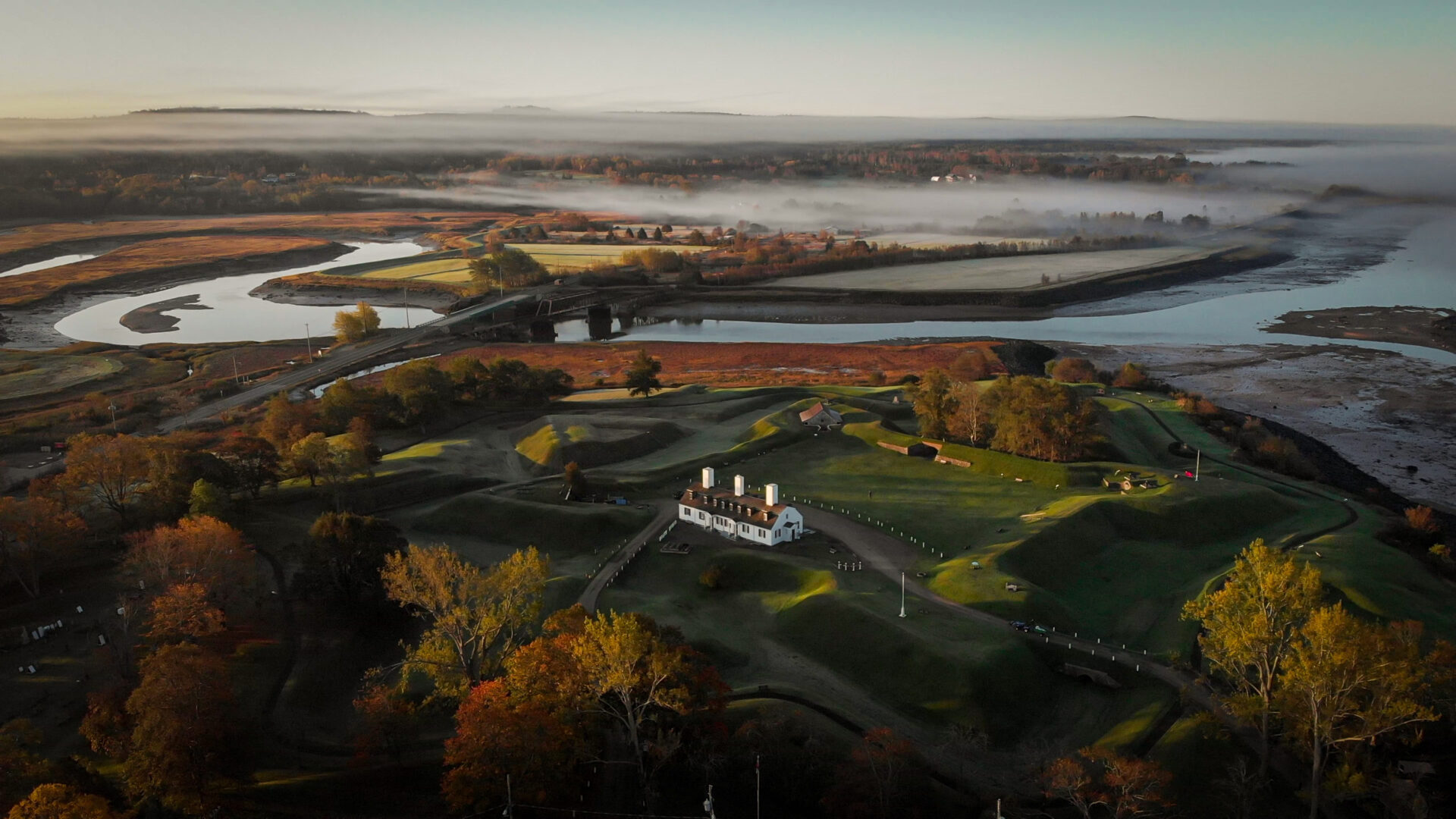
The Acadian Story
The Acadian story can be explored along the Fundy Basin coast as you explore several national historic sites including Fort Anne, Port-Royal, Fort Edward, and Grand-Pré.
In 1636, Charles de Menou D’Aulney having assumed command of Acadie, moved his base from LaHave to Port-Royal (today’s Annapolis Royal). The French settlers established a long-lasting alliance with the Mi’kmaq. They developed salt-marsh farming by creating a unique dyke system. Eventually, the people of Acadie developed an identity independent of France – they became Acadien. In the 1670s, they established settlements in the Chignecto region and in the 1680s at Grand Pré, Pisiquid, Cobequid, and other locations.
Port-Royal was the military centre and seat of government for Acadie. Typically, whenever war broke out between England & France, the Acadiens remained neutral. In 1710, at the final capture of Port-Royal, Acadie became the British territory of Nova and the capital renamed Annapolis Royal. The matter of oaths was complex and was the central issue in the strained relationship between the British and the Acadians. In 1755, with war looming between France and Britain, the Acadians refused twice to swear to an unconditional oath of allegiance. The acting governor issues the deportation order. Buildings were burned, animals and crops seized. Between 12,000 and 14,000 Acadians were rounded up and crowded onto transport ships and deported to other British colonies. The Deportation lasted eight years and upon their return, they were forced to settle in scattered, marginal areas away from the fertile lands they had once farmed.
For more information on these National Historic Sites visit https://www.pc.gc.ca/en/voyage-travel/promotion/nouvelle-ecosse-nova-scotia
Places
Fort Anne National Historic Site
Annapolis Royal, Nova Scotia
Visit Canada’s first National Historic Site: Fort Anne.
Port-Royal National Historic Site
Granville Ferry, Nova Scotia
Visit this reconstructed wooden habitation established by French explorer Samuel de Champlain in 1605 on the traditional homeland of the Mi’kmaq. Costumed interpreters will animate history and you can learn about the cultural and historical ties between the French and the Mi’kmaq. Walk along the basin shorelines or interact with the living history in the habitation walls.
Fort Edward National Historic Site
Windsor, Nova Scotia
Discover North America’s oldest military blockhouse.
Melanson Settlement National Historic Site
Granville Ferry, Nova Scotia
Stroll the path and take in the view over the marshlands and fields.
Charles Fort National Historic Site
Granville Ferry, Nova Scotia
Stand on the place where the first Scottish colonists arrived in 1629.
Grand-Pré National Historic Site
Grand Pré, Nova Scotia
Discover powerful Acadian stories within a picturesque landscape. Successes and struggles
Road Map
Annapolis Royal, Nova Scotia to Grand Pré, Nova Scotia
Popular VisitLists
Makers, Performers and Artists of Atlantic Canada
Miscouche, Prince Edward Island to St. John's, Newfoundland and Labrador 26 places
Learn about and engage with our region’s rich heritage of craft, fine and performing arts
View VisitList
Art in Atlantic Canada
Centreville, Nova Scotia to Ministers Island, New Brunswick 21 places
Artists have always abounded in Atlantic Canada learn more at these sites
View VisitList
#canadianvisitlist
Hamilton, Ontario 1 place
Beautiful spot to visit
View VisitList
Fascinating
Acton, Ontario to Hamilton, Ontario 4 places
Great places around Ontario #canadianvisitlist
View VisitList
